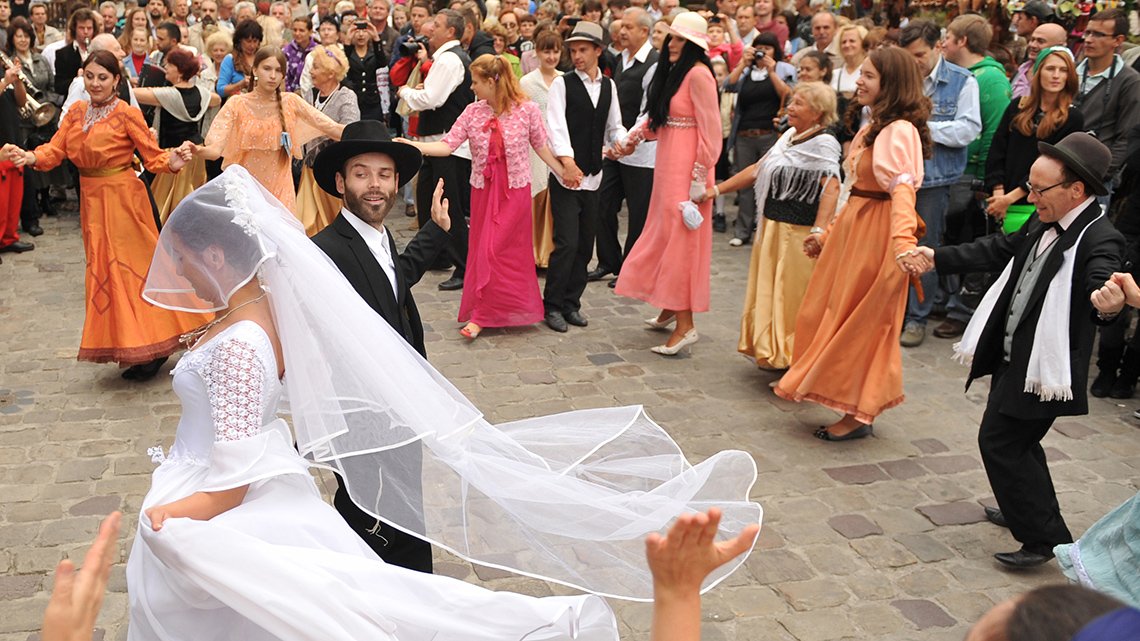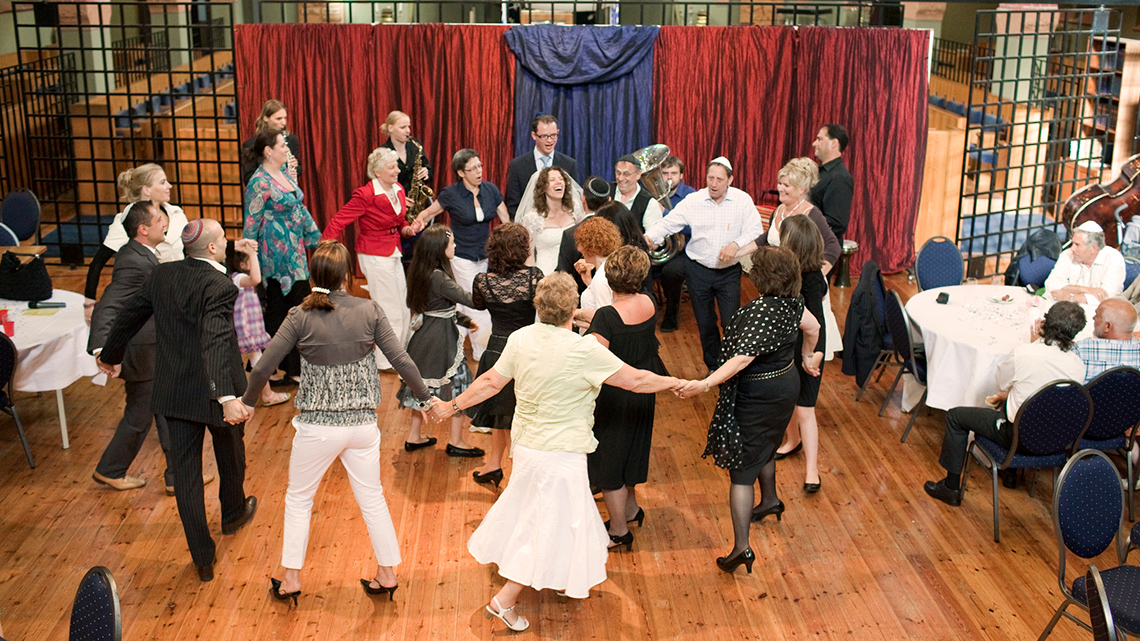Minds On
Today’s vocabulary
Press the following tabs to access today’s vocabulary.
Let’s get started!

Two teachers are talking. The first teacher says, “People dance all over the world!” The second teacher responds, “Many different cultures and communities dance for all different reasons.”
Explore this video entitled “Polish Day” to learn more about a dance from a Polish day festival.
Why do you think the people might be dancing?
Action
Get ready, get set…
Task 1: Why do people dance?

Two teachers are talking. The first teacher says, “There are lots of different reasons why people dance.” The second teacher adds, “People dance at ceremonies, celebrations, and performances all around the world.” Then, the first teacher says, “Let’s explore some of the different reasons people dance.” Then the second teacher ends by saying, “As you explore these examples, think about dance in your life. Do you dance for any of these reasons?”
Dance at weddings
In many cultures, dances are performed at weddings. One example is the Hora dance. It is a traditional Jewish wedding dance. In this dance, people hold hands and make a circle. The couple who are getting married are sitting on chairs. They are lifted in the air on the chairs in the middle of the circle and carried.
Dance for community and culture
In First Nations, Métis, and Inuit cultures, dance is used for celebration, culture, ceremony, and for entertainment. There is music that goes with the dances and the people wear traditional clothing called regalia. Each community has different styles of regalia that are reflected in the specific colours, materials, designs, and beadwork used.
Dance has deep cultural meaning within Indigenous communities. Each dance carries special teachings and histories with it, and each is performed for different reasons based on the community it comes from.
Explore the following dances.
Press the following tabs to access some examples of indigenous communities and how they use dance.
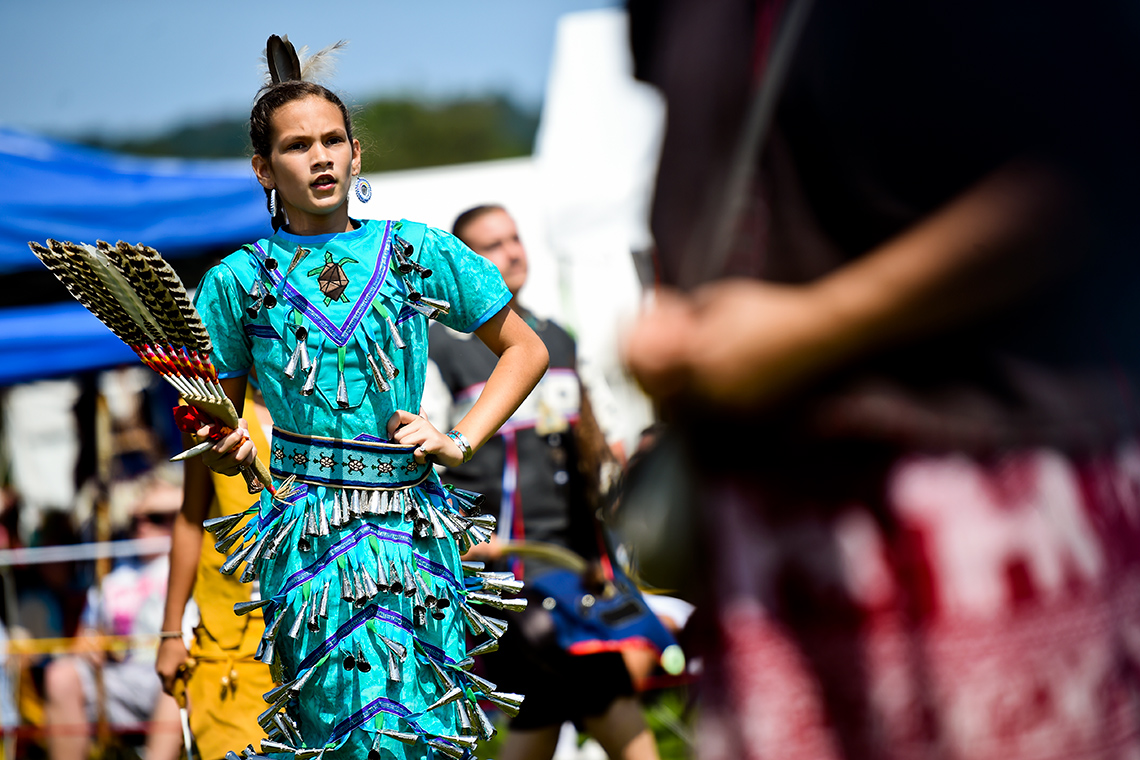
The Inuit drum dance is from Inuvialuit and is performed to celebrate births, weddings, and life at funerals, as well as successful hunts in the community.
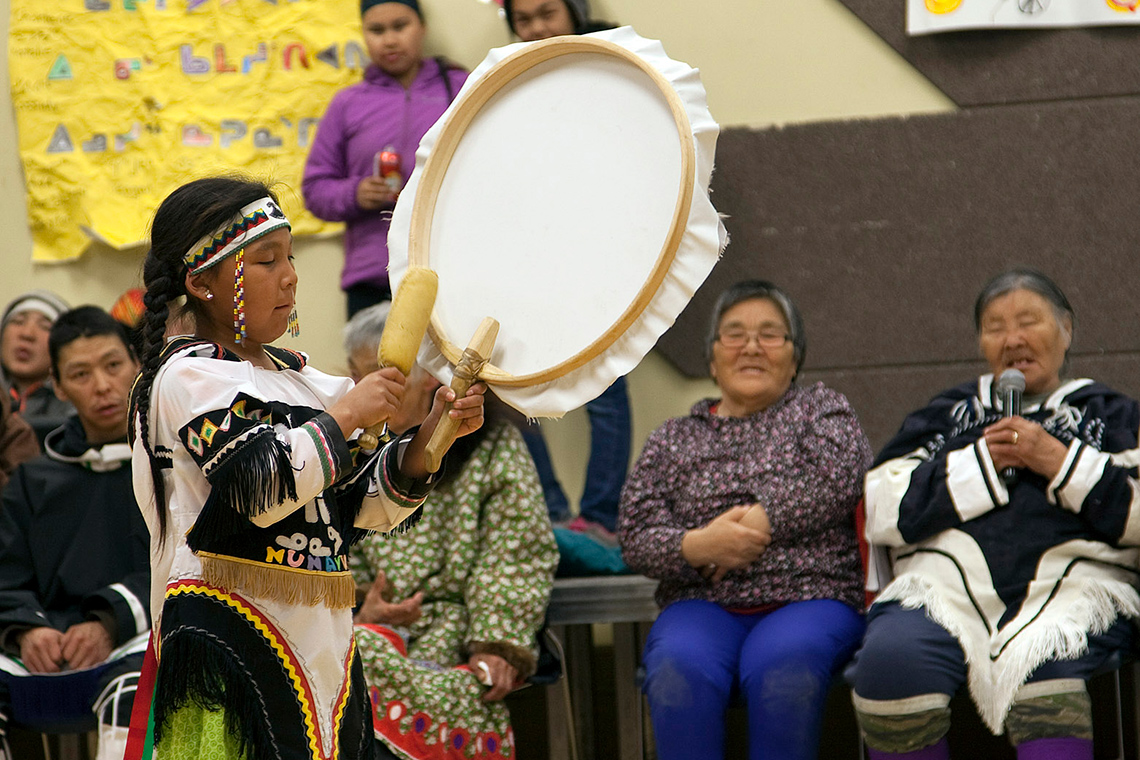
Métis jigging is performed at many social events to celebrate Métis culture. A dancer’s unique steps reflect their family or community in which they learned the dance. The following dance, the Sash dance, is an example of a popular Métis jig.
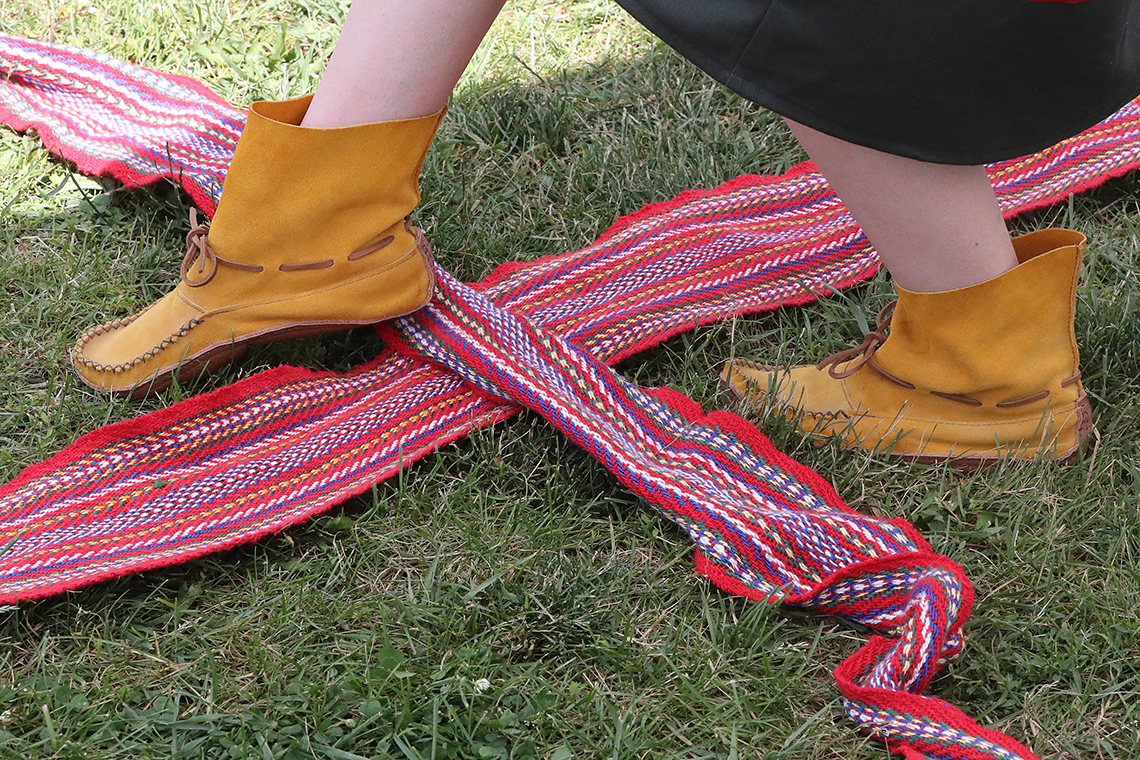
Dance for celebration
Punjabi farmers in India performed a dance called Bhangra. They did a special movement every time they finished a task during the harvest season. This made their harvesting chores more enjoyable. When they finished harvesting their crops, everyone would attend celebrations. They would dance Bhangra to celebrate the end of the harvest season.

Two teachers are talking. The first teacher says, “Bhangra used to be mostly danced by men, but now it is very popular and is danced by all people.” The second teacher responds, “Today, people dance Bhangra at weddings and other celebrations. There are even Bhangra dance competitions!”

A group of people making Bhangra dance movements. The dancer in the front is standing on one foot leaning to their right with both arms raised. The dancer to their right is performing the same movement. The other dancers are performing similar movements with their own variations including hands raised and, in some cases, both feet on the ground.
Dance for exercise and fun
Hip hop is a dance that uses high-energy movements that go with the steady beat of the music. Hip hop dance is about expressing yourself. It came from Black and Latinx communities in the United States of America.

One teacher is talking. The teacher says, “Today, Hip hop dance is very popular across the world! Many dance studios teach Hip hop. It’s often done for exercise!”
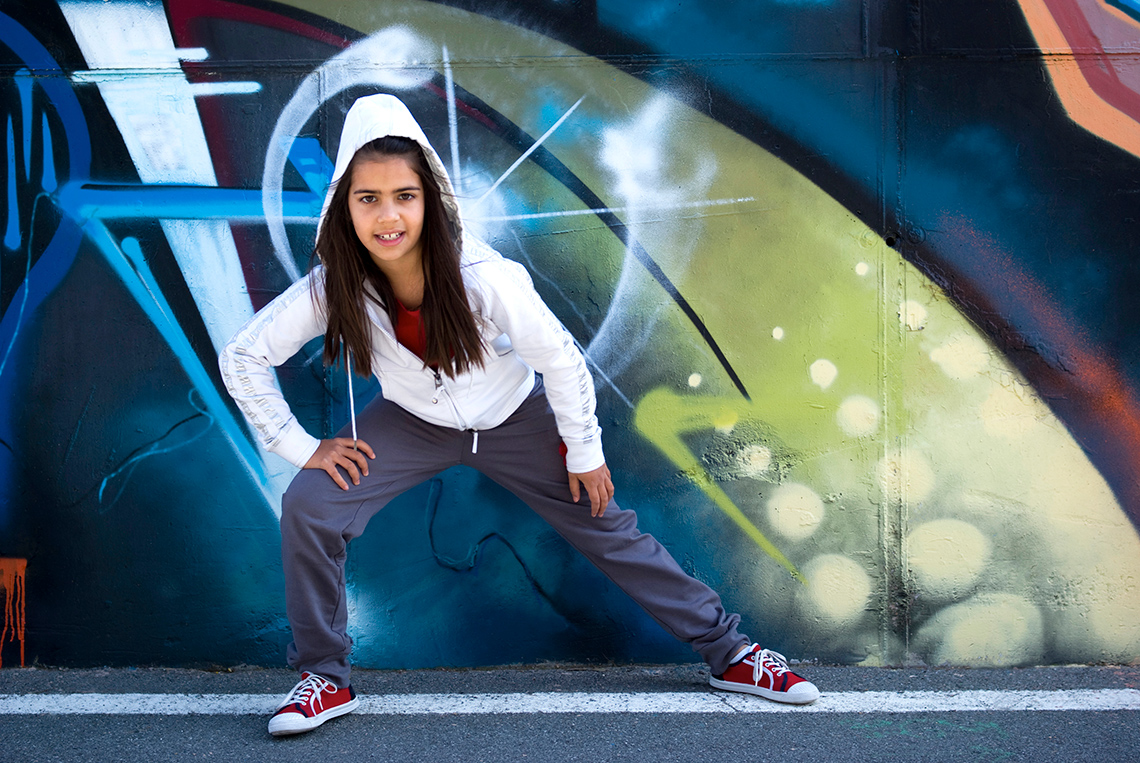
A child dancing. Their feet are far apart and their knees are bent. They are leaning to the left with one hand bracing on their left knee and their other hand resting on their right leg.
Using dance to tell stories
Ballet is one of the most popular forms of dance in North America and Europe. It is a form of dance called narrative dance. Narrative dance uses movements to tell stories.

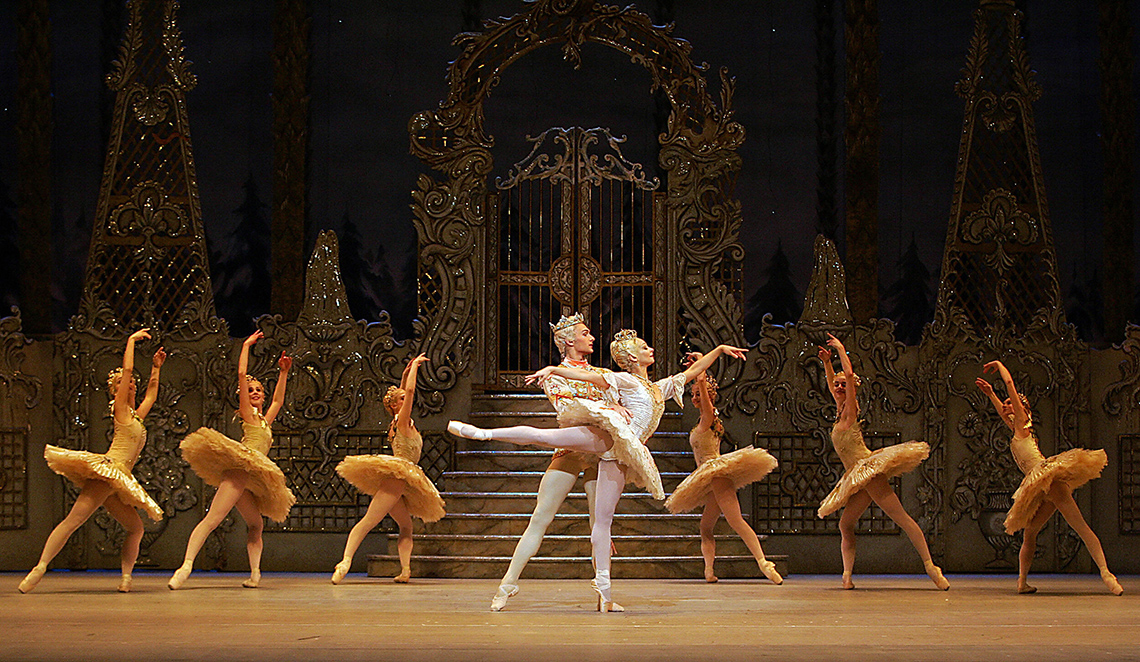
Ballet dancers on a stage. Three dancers in the background are facing the right with their arms raised in the air. Three other dancers in the background are facing the left with their arms raised in the air. Two dancers are at the front of the stage. One is holding the other around the waist. The dancer in the front is standing on the toes of one foot with their arm raised and one leg stretched back. Both dancers are facing left.
Go!
Task 2: Analyzing dance
People dance at celebrations, festivals, for exercise, and even to tell stories.
Think about these questions as you examine the video of the Polish folk dance again:
Why do you think they were dancing in the video?
Are they dancing for the same reason as any of the other dances we explored? How are the reasons different?
Record your thoughts digitally, orally or in print.
Revisit this video entitled “Polish Day” to learn more about a dance from a Polish day festival.

Two teachers are talking. The first teacher says, “Phillip and Seth were having so much fun in the video!” The second teacher responds, “Why were they dancing?”
Press ‘Reason’ to access why they were dancing.
They were dancing to celebrate Polish Day.
Revisit this clip from the video entitled “Polish Day” to learn more about the reason for this dance.

Two teachers are talking. The first teacher says, “Have you ever experienced Polish Folk Dance before?” The second teacher responds, “No, what is Polish dance like?” The first teacher replies, “Let’s explore a clip of Seth learning to dance!”
Explore the video entitled “Polish Day” to learn more about the steps of the Polish dance.

Two teachers are talking. The first teacher says, “Did you notice what the dancers were wearing in the video?” The second teacher responds, “I think they were wearing traditional Polish costumes.” The first teacher ends by saying, “Yes, Seth wore pants, a jacket, and a special apron. He was also wearing special boots that helped him make noise while he danced.”
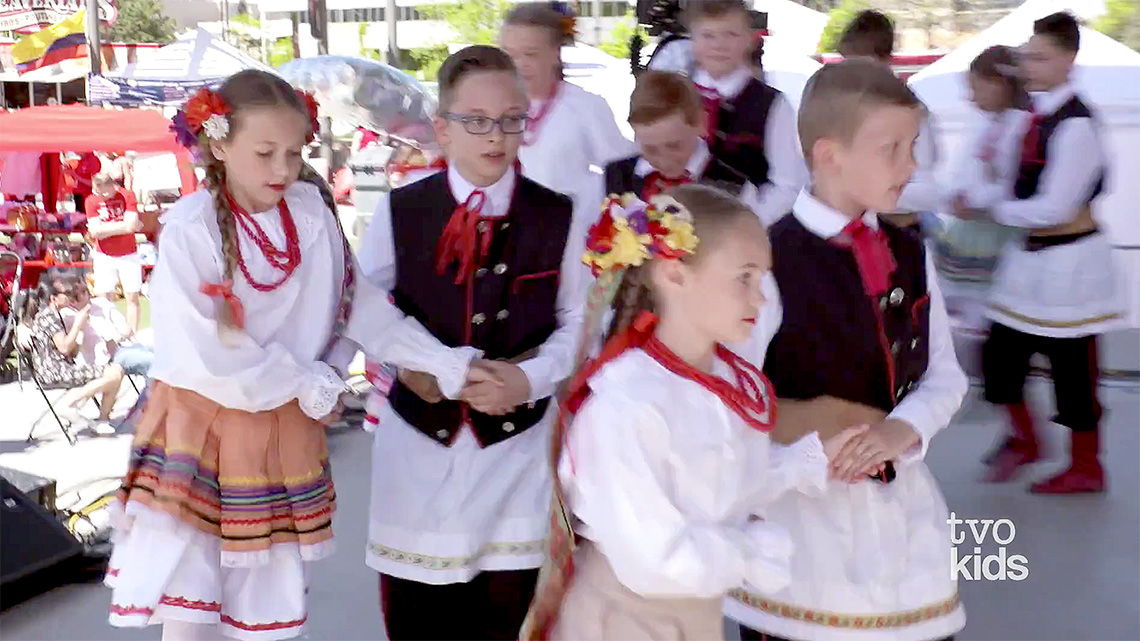
Consolidation
Putting it all together
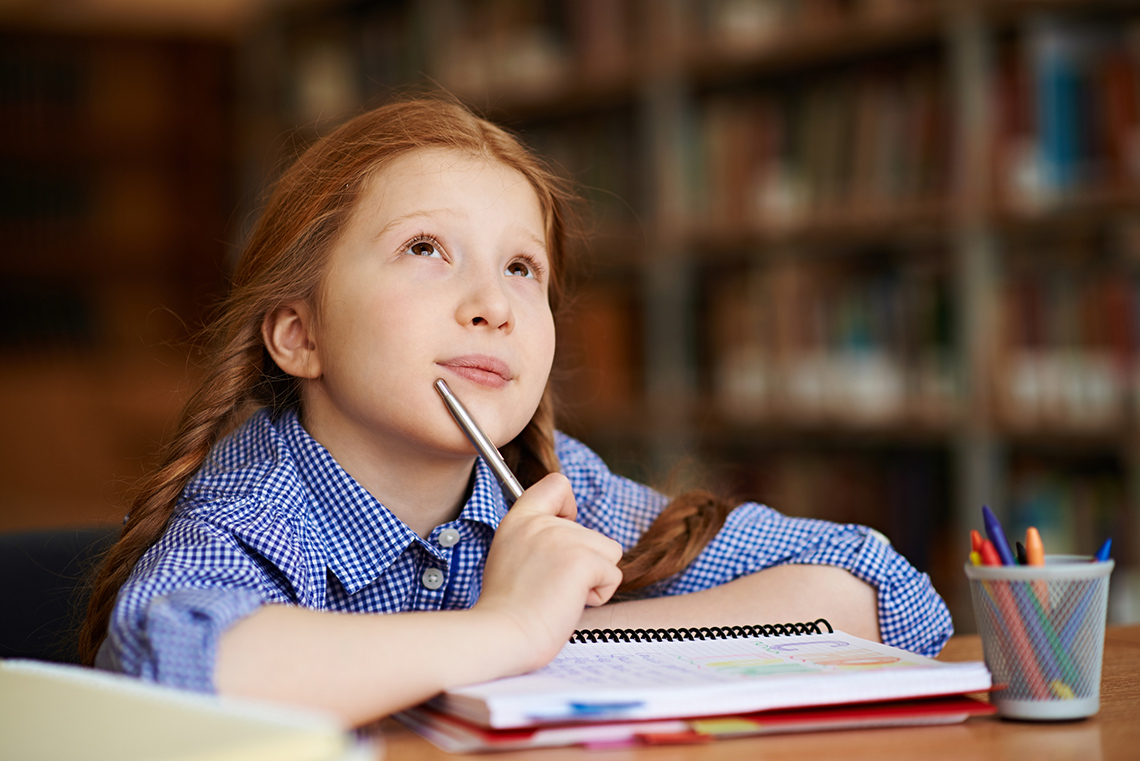
Use the following questions to reflect on your learning. Draw, write, record your responses in the following graphic organizer.
Portfolio
Review your learning
Complete the My Dance Experiences activity in your notebook or using the following fillable and printable document. If you would like, you can use speech-to-text or audio recording tools to record your thoughts. Consider adding your work to your portfolio.

Press the Activity button to access the My Dance Experiences activity.
Activity (Open PDF in a new tab)Reflection
How do you feel about what you have learned in this activity? Which of the next four sentences best matches how you are feeling about your learning? Press the button that is beside this sentence.
I feel...
Now, record your ideas about your feelings using a voice recorder, speech-to-text, or writing tool.
